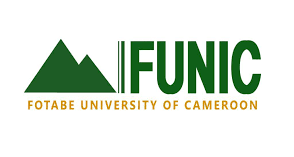Solutions of navier stokes equations for dam break problem in two dimension using finite element method
Keywords:
Dam Break, Finite Element Method, Navier Stokes Equation, Fluid MechanicsAbstract
A dam break is one of the most catastrophic events in hydraulic systems it happens when a dam suddenly fails, unleashing massive amounts of water in an uncontrolled rush. Even though water covers most of the Earth, water scarcity continues to be a serious challenge, especially in regions that rely heavily on irrigation. In response, many governments have invested in large scale dam construction to support food security by irrigating over 600,000 hectares of dry and semi-arid land. While dams are essential for water storage and agricultural productivity, they also come with significant risks. The enormous potential energy they store can lead to devastating environmental and social consequences if a failure occurs. This study focuses on modeling and simulating dam break scenarios using the two-dimensional Navier-Stokes equations, widely recognized for describing fluid behavior, solved through the Galerkin finite element method in MATLAB. The simulation considers steady-state, incompressible Newtonian fluids without body forces and applies the classic lid-driven cavity problem for benchmarking. To achieve accurate results, the study uses eight-noded rectangular elements, with quadratic interpolation for velocity and bilinear interpolation for pressure, resulting in 20 unknowns per element. The finite element method was selected over other numerical approaches because of its accuracy, especially when dealing with complex geometries. The simulation results align well with benchmark data across various Reynolds numbers, confirming the method’s accuracy and reliability. These findings are valuable to the field of computational fluid dynamics (CFD), offering an effective way to simulate dam related fluid movement. More importantly, in the context of hydraulic engineering and disaster preparedness, the study provides critical insights into how dam failures evolve and how flood waters behave when released. This knowledge can inform smarter emergency planning, safer dam designs, and stronger public awareness for downstream communities, ultimately contributing to more resilient disaster risk reduction efforts.
Published
How to Cite
Issue
Section
Copyright (c) 2025 Owen Mulinya Kizito, David Angwenyi, Duncan Oganga

This work is licensed under a Creative Commons Attribution-NonCommercial 4.0 International License.
Most read articles by the same author(s)
- Cavin Oyugi Ongere, David Angwenyi, Robert Oryiema, Second order extended ensemble Kalman filter with stochastically perturbed innovation for initializing artificial neural network weights , African Journal of Empirical Research: Vol. 6 No. 3 (2025): Jul-Sep 2025
- Samuel Wesonga Usolo, Dr. Okoth Annette, Dr. David Angwenyi, Modeling the effect of devolution on youth unemployment rates in Kenya using autoregressive integrated moving average - intervention model , African Journal of Empirical Research: Vol. 6 No. 3 (2025): Jul-Sep 2025
- Michael Musyoki, David Alilah, David Angwenyi, Application of the Vector Autoregressive Model Incorporating New Measurements Using the Bayesian Approach , African Journal of Empirical Research: Vol. 4 No. 2 (2023): Jul-Dec 2023
- Lucian Talu Mayabi, David Angwenyi, Duncan Oganga, Stochastic modelling of predator–prey dynamics in a three-patch ecosystem , African Journal of Empirical Research: Vol. 6 No. 3 (2025): Jul-Sep 2025
- Kevin Midenyo, David Angwenyi, Duncan Oganga, Second Order Extended Ensemble Filter for Non-linear Filtering , African Journal of Empirical Research: Vol. 5 No. 4 (2024): Oct-Dec 2024























